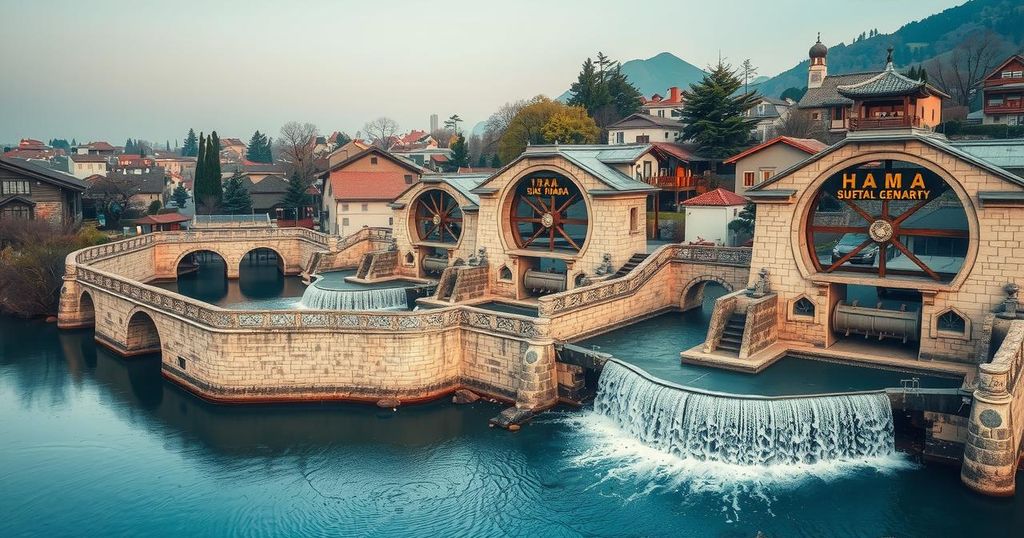World news
AP, AP PHOTO, APTN, ASIA, ASSOCIATED PRESS, BASHA, BASHAR ASSAD, BEIRUT, CURRENT EVENTS, EUROPE, FRANCE, HAFEZ ASSAD, HAMA, LEBANON, MICHEL EULER, MUSLIM BROTHERHOOD, NEWS, PARIS, PROTEST, PROTESTS, REFUGEE CRISIS, RI, SHAAM, SHAAM NEWS NETWORK, SYRIA, UGARIT, UGARIT NEWS, UGARIT NEWS GROUP, WAR
Amira Khan
0 Comments
The Significance of the Rebel Capture of Hama in Syria’s Ongoing Conflict
The Syrian army has withdrawn from Hama following an insurgent offensive, marking a setback for President Assad. Hama is historically significant due to the 1982 massacre by Hafez Assad. Insurgents’ capture of the city symbolizes a potential shift in power dynamics within the ongoing conflict, with eyes now on Homs as the next critical target.
The Syrian army has retreated from Hama following an offensive by insurgents, marking a significant setback for President Bashar Assad. This comes after opposition fighters announced their entry into the city, advancing toward its center. Hama, remembered for a dark past, became the site of the notorious Hama Massacre in 1982, wherein thousands perished during a government crackdown led by then-President Hafez Assad.
Hama, Syria’s fourth-largest city, once boasted picturesque waterwheels, but the early 1980s transformed its reputation into one of devastation and death. The city witnessed sustained anti-government violence from the Muslim Brotherhood, culminating in a brutal government assault that obliterated large parts of Hama. Hafez Assad’s brother, Rifaat, played a pivotal role in the massacre, leading artillery attacks that earned him infamy.
The aftermath of the Hama Massacre spurred resentments that fueled future uprisings against Assad’s successors. In the wake of the Arab Spring in 2011, Hama became a critical site for protests against Bashar Assad, as its citizens rallied for change. During a brief period of insurgent control in 2012, residents symbolically painted the city to commemorate victims of the massacre, embodying their desire for liberation.
However, Assad’s forces reclaimed the city with overwhelming force, resulting in significant casualties among the protestors. Analysts emphasize that the horrors of the Hama Massacre remain deeply ingrained within the collective memory of the Syrian populace and continue to shape the regime’s military strategies.
On a recent video address, Abu Mohammed al-Golani, leader of the insurgency, remarked on the symbolic nature of retaking Hama, recognizing it as a long-awaited reckoning for the injustices of the past. Insurgents liberated prisoners from Hama’s central prison, further igniting hopes for change in the area.
Strategically, Hama serves as a crucial junction connecting Syria’s diverse regions and holds significant importance as it lies in proximity to Assad’s stronghold in Damascus. The fall of Hama is compounded by the recent loss of Aleppo, leading to increased determination among Assad’s adversaries. Analysts suggest that the potential capture of Homs next could shift the dynamics of the conflict favorably for the insurgent forces, creating challenges for the Assad regime.
The capture of Hama by insurgents represents a pivotal moment in the Syrian conflict, echoing the city’s tragic history and symbolizing a glimmer of hope for those opposed to the Assad regime. As the rebels consolidate control and target further strategic locations like Homs, the dynamics of power in Syria may shift significantly, raising questions about the future resilience of President Assad’s rule and the ongoing quest for justice following decades of brutality.
Original Source: apnews.com




Post Comment